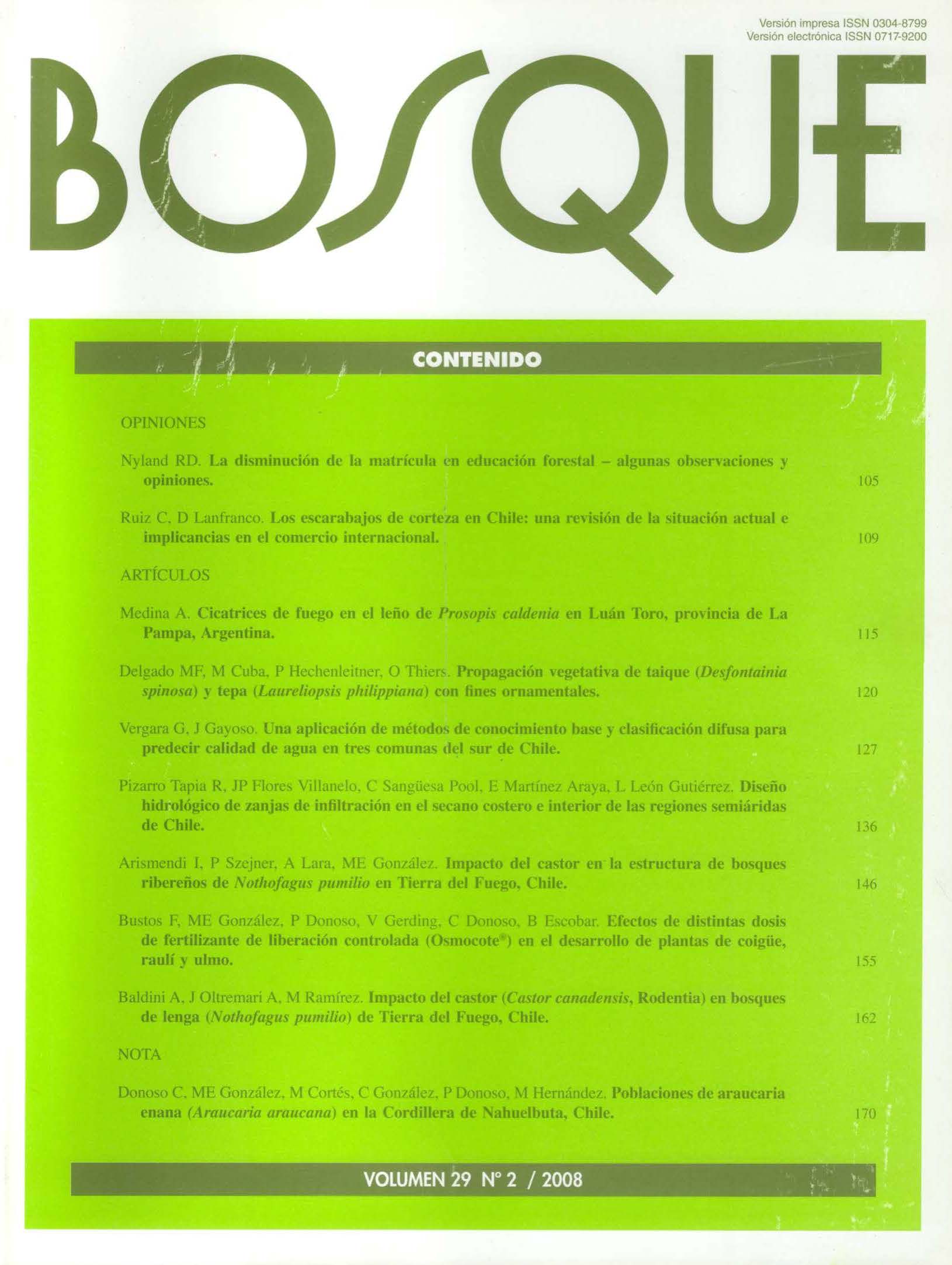Hydrologic design of infiltration ditches in coastal and dry lands of Chilean semiarid regions
Main Article Content
Abstract
In this research a hydrologic design is defined for infiltration ditches in forest works, for arid and semiarid regions in central Chile. In this context, four plots were evaluated (Hidango, in O'Higgins Region; Name, in Maule Region; and Llohué and Manzanares, in Bío-Bío Region), including two types of infiltration ditches, established in May 2002, linked to a plantation of Pinus radiata. Each plot has a unit witness, which does not present any type of soil treatment. Two types of ditch infiltration were differentiated in width; one of them showed 20 cm and the other 30 cm, but both possessed the same height of 30 cm. The first one was named ditch type 1 and the other ditch type 2. Results showed that the application of the new hydrologic design for infiltration ditches is very useful when facing extreme events. Also, ditches showed a greater surviving rate for P. radiata, being more evident in ditch type 1 that defines less distance between ditches. However, in two plots there is evidence that witnesses showed more biomass than ditches did, although it is not always significant from a statistical point of view. Finally analyzing another type of variables, such as nutrition plant or genetic conditions, becomes necessary to be considered in future research.

